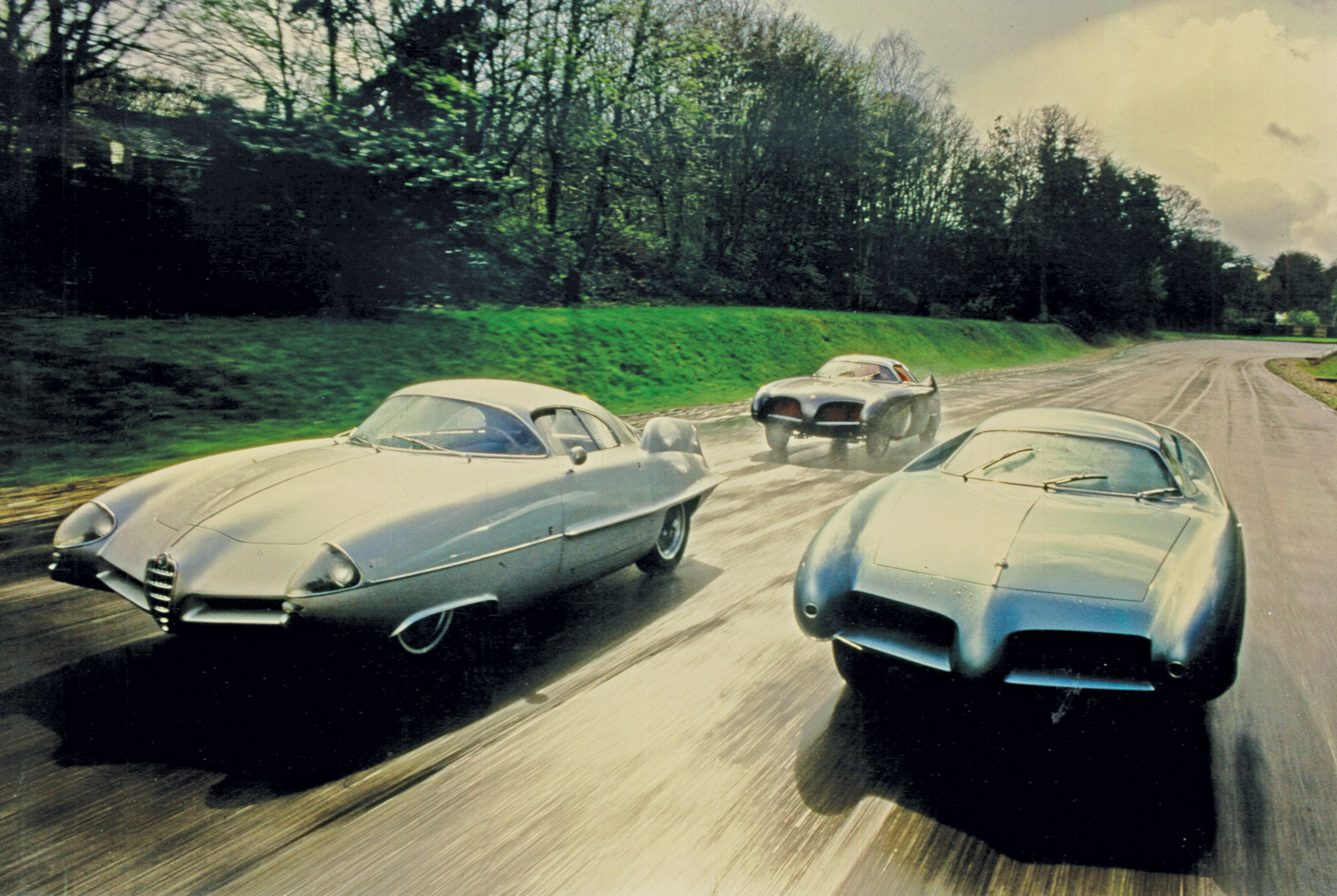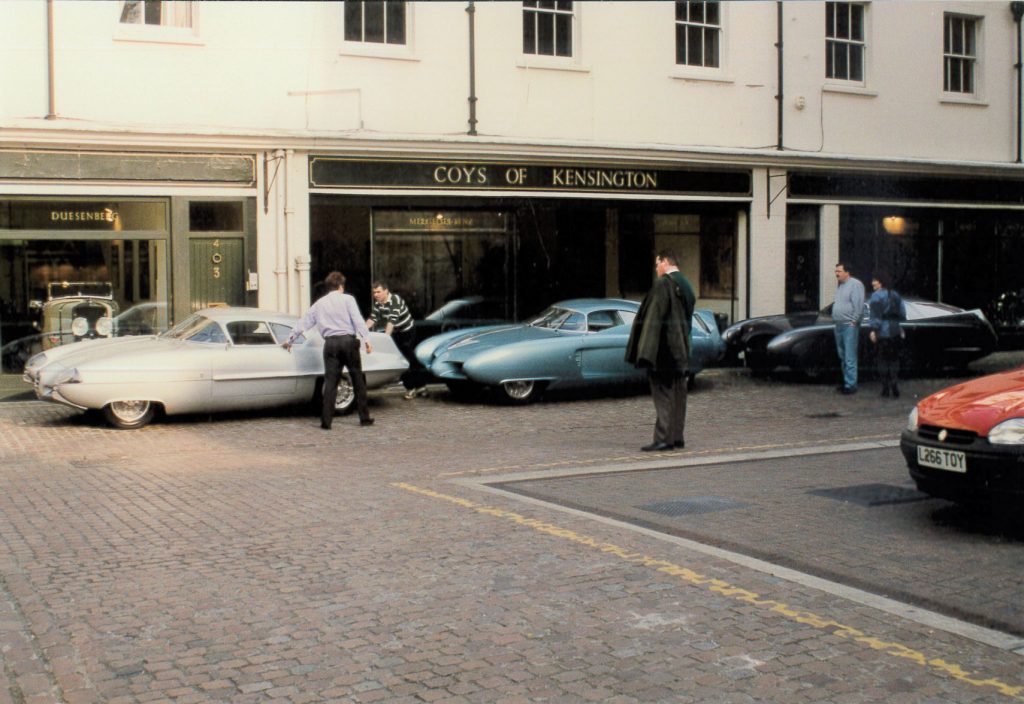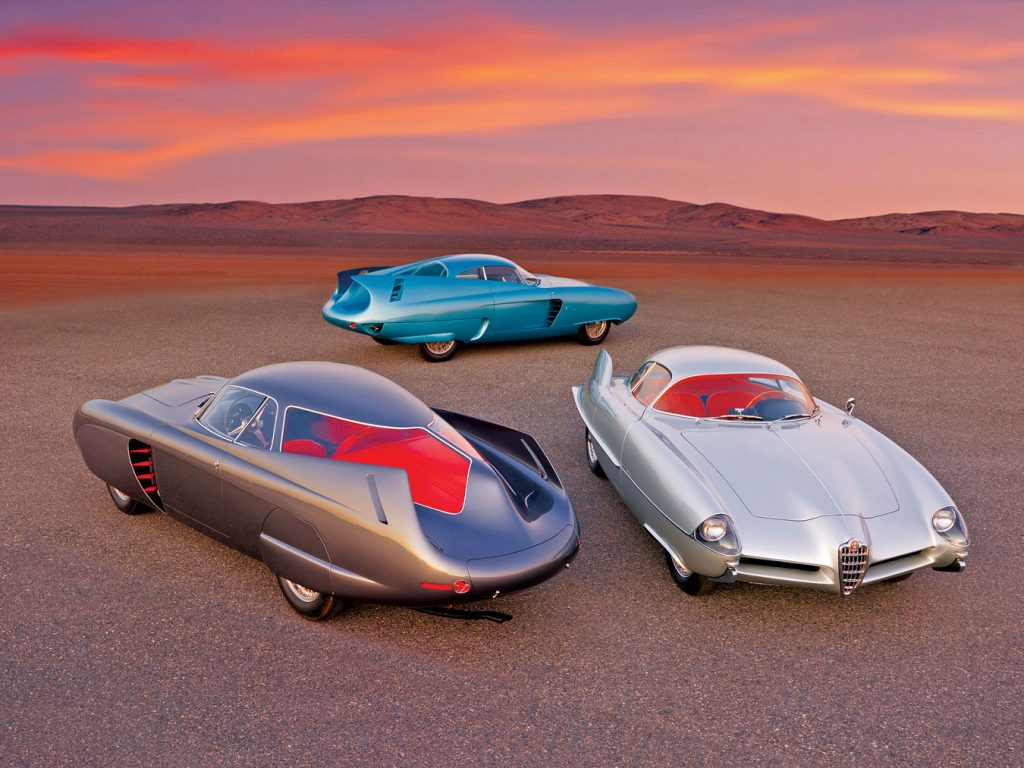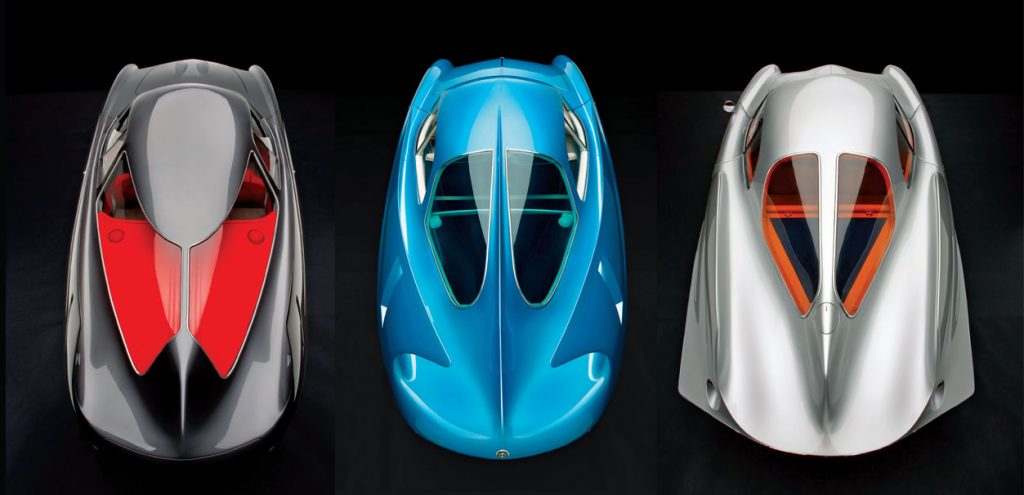
“A roaring motor car ... is more beautiful than the Victory of Samothrace.”
— Filippo Marinetti, a founder of the Futurist art movement
Picture the scene: a quaint cobbled London mews that once housed the horse stables of the Kensington aristocracy but had since become a mecca for classic-car collectors, the global center in the trade for million-dollar carriages of the horseless variety. There’s a small pub opposite, frequented by students from the local university, hanging around outside most afternoons for a pint and a chat. A lumbering covered truck hisses as it eases to a stop at the entrance to the mews and the parking brake is applied. The driver gets out and disappears around the back for a few minutes to unload his mysterious cargo.
The drinkers are immune to most sights, and many profess to regard cars as a symbol of decadent capitalism, best scorned rather than admired. But nothing prepares them for what emerges from the truck that crisp spring day. Gradually something is lowered from the ramp at the rear into the sunlight which glances off its bizarre surfaces. Is it a car? A plane? A spaceship? The wild curves of dazzling metallic paint and swooping glass don’t fit with any convention of elegance or automotive form. And hang on, are there two of them? Or even a third? Jaws drop in silence and pint glasses are put aside as the crowd approaches for a closer look. The BAT Alfas have landed in 1990s London.
Here today, gone tomorrow
Little did the Kensington students know that they were witnessing another unlikely chapter in the life story of three unique cars created in Italy 40 years earlier as a collaboration between one of history’s great sports-car makers, Alfa Romeo, and an ambitious coachbuilder seeking to woo it: Bertone.
In a 1950s Italy obsessed with space travel, speed, American popular culture and glitz, eager carrozzerie vied to outshine each other with ever-more-daring show cars whose real purpose was to create a buzz and perhaps generate other, more commercial commissions, either from manufacturers or the few remaining private buyers who could afford “bespoke.” The BATs — that’s Berlinetta Aerodinamica Tecnica, grazie — were claimed to illustrate how modern aerodynamics could improve performance without the need to resort to tuning or displacement. If contemporary press claims are to be believed, drag was up to 38% less than the modest Alfa Romeo 1900 saloon with the same underpinnings. The third of the trio, BAT 9 (the missing numbers never made it past the drawing board), did actually influence the design of the Alfa Romeo Giulietta Sprint Speciale, a quirky-yet-effective weekend racer model, but otherwise the BATs disappeared into obscurity as emphatically as they had appeared on the motoring stage.

Colorful Chicago entrepreneur Stanley “Wacky” Arnolt, one of Bertone’s biggest customers (literally and financially) bought BAT 5 after its show tour ended and would occasionally commute with it. The next owner left it in storage for 29 years. BAT 7 made an appearance at Pebble Beach, was raced at Palm Springs (unremarkably for the winners but memorably for the public), shorn of its wild fins and forgotten until sold to Mexican collector Lorenzo Zambrano in 1987. The final BAT 9 ended up enticing buyers into a Dodge-Plymouth dealership in Michigan. A local 16-year-old was entranced by its “eerie” looks, and despite being dismissed with “it’s not for sale,” earned enough money from a popcorn stand outside his parents’ gift shop to be able one day to walk into the showroom with a bag of cash, supplemented by a parental loan on condition he parked BAT 9 in front of their store. He kept it for decades and its sale later helped extend his wife’s life by funding cancer treatment.
Reunited after three decades
How did the BATs end up together? Well, credit goes to Pebble Beach, which managed to secure all three for display in 1989, where a Japanese investor (remember them?) walking the field was stopped in his tracks by the sight of the trio. The first purchase was expensive. The second, when the owner discovered the man had already bought one BAT, was eye-watering. And the third BAT owner was able to name his price. But the full set was complete after over three decades.
Fast forward to that day in London, after the market had crashed and the Japanese were shedding boom-era assets as fast as they could. I was working at that mews emporium, responsible for auctions and the occasional private sale, and had earned the Japanese owner’s trust by selling his Ferrari 250 LM. The BATs were to be offered as a single package, priced at $5 million, if my memory is correct.

They created a huge stir on a bespoke stage at the Birmingham Classic Car Show, but we found ourselves one car space short on the return truck, at which point I would have driven BAT 9 back to London if the rear lights had worked. Next stop: Chris Evans’ live breakfast TV show, which must have amused early-morning viewers but didn’t unearth the next millionaire BAT buyer. We were on standby to truck them to a private airport so that the Sultan of Brunei could glance at them before boarding his 747, but he must have changed his mind and they didn’t leave the showroom.
Together with Mick Walsh of Classic & Sports Car, we took them to a wet and rainy Ministry of Defence test track for a pre-arranged photo shoot, where I learned how my clothes must feel in the washing machine as I lumbered around in one of the BATs, its lumpy 4-cylinder vibrating through the claustrophobic cabin and water pouring in from every opening. They did, however, stop traffic when we drove them in convoy through London to the Louis Vuitton Concours, including a detour along the famed Kings Road, using the only set of trade plates we could find: one for the nose of the lead car, the other to stick on the back of the rear car, and BAT 7 sandwiched in the middle.
Bargain or batty?
We never did manage to sell them, but I’ve followed their progress keenly ever since. First to a discreet Dutch Alfa collector, who I doubt ever drove them, and then to a reclusive collector in Asia who has tested the market quietly several times over the years, including a showing at Phillips auction house in London last November, where I was invited to speak about them. Seeing the BATs in the metal again after 25 years didn’t diminish their impact. These are truly automotive sculpture, and I struggle to name any car — much less a triptych — with the same visual impact at any price level.

When they sold last week in a New York art auction for $14.8m, I felt a pang of regret at not being able to buy them myself. Yes, they’re next to useless as cars (lack of power, visibility, turning circle, handling or basically anything except a concours stage) but does that matter in the context of history and design? Cars haven’t yet transitioned to art, but as we are gradually legislated off the roads, they might do so, and in that context — and for less than the price of a single McLaren F1 or maybe the same as an Alfa 33 Stradale, BAT designer Franco Scaglione’s other masterpiece — I’d say that for the right person, the BATs were, if not a bargain, at least an enlightened long-term purchase. ♦